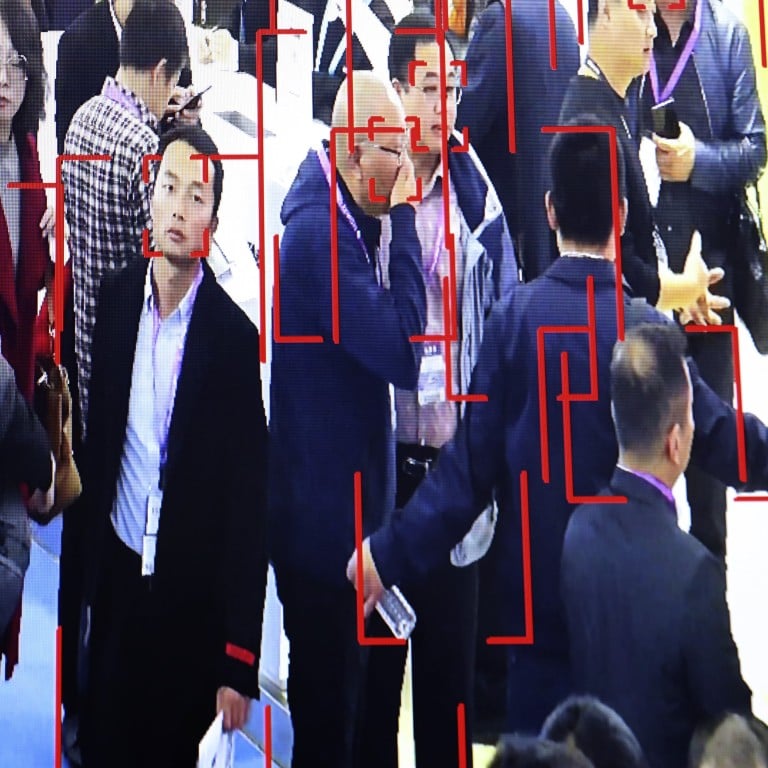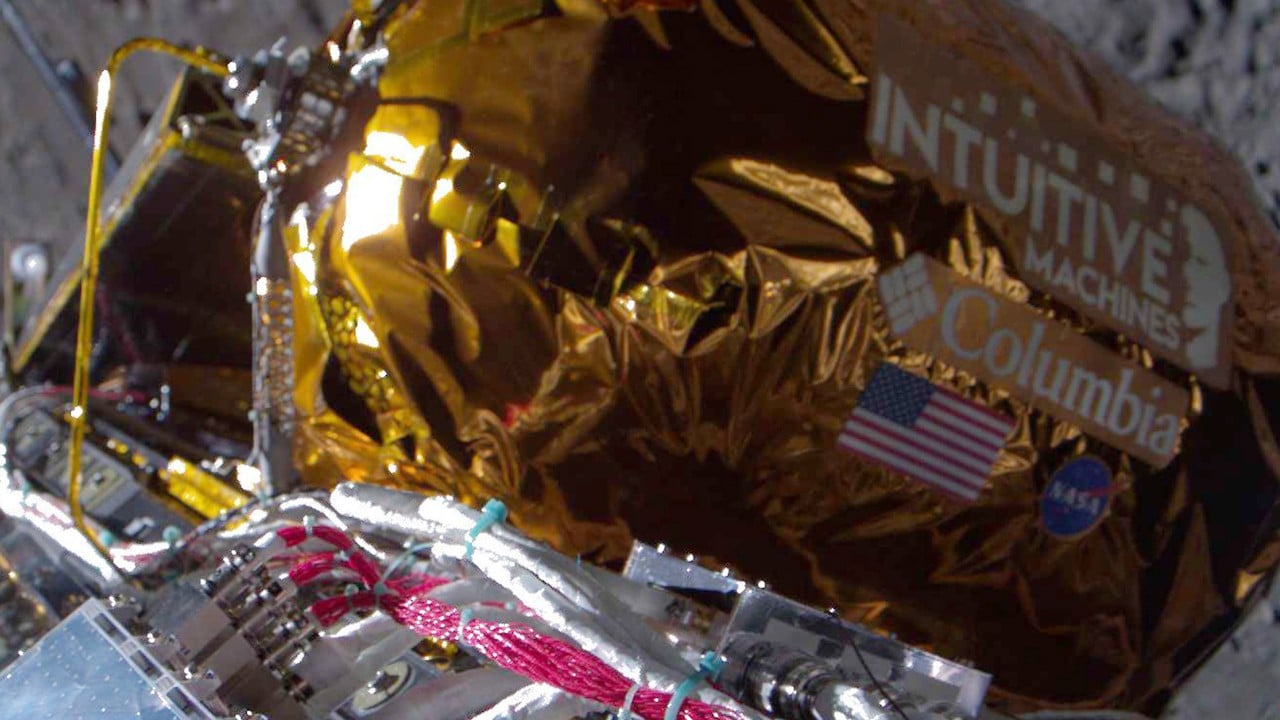
Skynet 2.0: China plans to bring largest surveillance camera network on Earth to the moon to protect lunar assets
- Chinese aerospace agencies outline how 600 million-camera Skynet inspires system to watch lunar assets and track foreign visitors to the moon
- Paper says that if ‘abnormalities’ are detected the system will send alarm signals and ‘initiate appropriate response measures’
Agencies behind the project say the lessons of Skynet will inform how they build and operate the optical surveillance system for China’s lunar research station.
Skynet, or Tianwang, is the world’s largest video surveillance network, with more than 600 million cameras, averaging one camera for every two adult Chinese citizens and covering virtually every nook and cranny of the country.
“The construction and operation of the optical surveillance system for the (International) Lunar Research Station can draw on the successful experience … of China’s Skynet project,” the Lunar Exploration and Space Engineering Centre of the China National Space Administration (CNSA) said in a paper published in the Chinese academic journal Acta Optica Sinica on February 22.
The co-authoring organisations – which also include the Chinese Academy of Sciences, the China Aerospace Science and Technology Corporation and Zhejiang University – are the main agencies that manage and execute China’s lunar programme and play a major role in setting technical standards.
China’s lunar version of Skynet will comprise a large number of high-performance security cameras operating in visible light or infrared zones.
These cameras, mostly weighing just 100 grams (3½ oz) each, will be equipped with AI-driven chips “capable of identifying, locating, tracking and aiming at suspicious targets independently”, according to the paper.
It said that if “abnormalities” were detected the system would “promptly generate alarm signals and initiate appropriate response measures”.
The paper did not specify what those measures might be.
After arriving on the moon in batches, the cameras would automatically connect to each other, achieving seamless coverage of the station area, according to the paper.
The proposed lunar research station, with a radius more than 6km (3.7 miles), is a sprawling complex larger than a Disney theme park. It will house a command centre, power station, communication hub, scientific facilities and a fleet of robots.
The station will even have its own satellites for remote sensing, navigation and communication.
To ensure its long-term stability and safety, decision-makers say a robust monitoring system is a must and say certain critical zones may even require continuous, 360-degree surveillance.
For events such as the arrival and departure of spacecraft carrying international astronauts, the system could provide multi-camera, high-definition live-streams to Earth. The authors said this would not only improve the station’s operational efficiency but also solidify China’s position as a leading space power.
But the vast amount of data generated by the cameras will test its bandwidth and data processing abilities.
To overcome these hurdles, Chinese scientists and engineers are leaning on their experience with the terrestrial Skynet project, where they have developed advanced technologies for efficient data transmission and processing under constrained bandwidths.
In 2024, China plans 100 rocket launches to send 300 spacecraft into orbit
Despite its controversial namesake – the malevolent AI from The Terminator movie franchise – the Skynet system is rooted in an ancient Chinese proverb that embodies the principle of omnipresent justice.
“There is forever a net in the sky, with large mesh but letting nothing through,” the proverb goes. It means that the law is all-seeing and wrongdoers will eventually face retribution.
In this context, China sees the lunar Skynet as part of its commitment to safety, security, and transparency in the ambitious moon exploration programme.
Critics contend that Skynet tramples on human rights and privacy. In a notable incident in Changsu in Jiangsu province in October, several Yushan park administrators lost their jobs for posting a surveillance video online that showed a couple having sex in the woods.
Still, many Chinese residents believe Skynet’s presence has made their country one of the safest in the world. In megacities such as Beijing and Shanghai, with populations exceeding 20 million, robbery and murder cases are rare and that for many years, the police have solved 100 per cent of crimes, according to the Ministry of Public Security.
Bringing Skynet to the moon will not be an easy task. According to CNSA requirements, a lunar surveillance camera must have a minimum lifespan of 10 years.
During that time, they must withstand the onslaught of high-energy particles in the space environment while functioning across extreme temperature fluctuations from above 100 degrees Celsius during lunar days to as low as minus 180 Celsius during lunar nights.
Despite their compact size, the lunar cameras are expected to perform myriad tasks, including capturing both distant and wide-angle views and they must be able to self-adjust and operate independently if communication with Earth is lost.
Chinese space authorities hope leading Chinese technology companies, including smartphone manufacturers, can help research and develop a surveillance system whose challenges include lens design, chip technology, protective materials, optical systems, communication protocols and AI algorithms.
The lunar Skynet must also be fortified against potential external threats, whether from other nations or terrorist organisations with security standards that may exceed those for terrestrial systems.
“Ensuring confidential communication between the various optical detection terminals and the central control hub represents a significant engineering hurdle,” the authors wrote in the paper.
“The encryption techniques employed for signal transmission and streaming media must be resilient against the interference caused by the intense electromagnetic radiation prevalent in deep space. The data must not be damaged or stolen,” said the paper.
“It underscored the need to establish a new set of standards tailored to the unique operational demands of deep-space missions, thereby ensuring the integrity and security of mass-produced optical surveillance terminals.”
In the new moon race, both China and the United States have outlined plans to establish international bases at the moon’s south pole. They are envisioned as the cornerstones of future lunar exploration efforts and participation from other nations is being sought.
Scientific speculation suggests water ice exists in the permanently shadowed craters of the lunar south pole.
However, the limited and potentially concentrated nature of these water resources has led to concerns they may become the focus of competition and potential conflict among spacefaring nations.
China’s lunar base: major African nation joins international moon project
Published research and discussions at international academic forums highlight the possibility that the Chinese and American lunar bases may be near each other, potentially even sharing the same crater.
International law prohibits the deployment of weapons on the lunar surface and both China and the US have reiterated that their lunar exploration programmes are strictly peaceful in nature.
However, the lack of a clear regulatory framework governing potential differences and conflicts between the two camps remains a significant concern.



